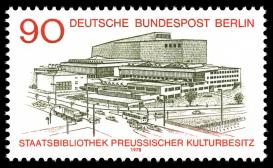In 1978, West Berlin opened its impressive new State Library, the Staatsbibliothek at Potsdamer Strasse, designed by Hans Scharoun around an open, 600-seat reading space. The 3 million books and the librarian services accompanying them required a complex and often noisy infrastructure for acquisition, classification, storage, and retrieval. Yet reading is conceived of as a practice that requires undisturbed silence, even solitude. How were these two potentially conflicting functions of the library, handling books and reading them, organized within the Staatsbibliothek’s architecture and urban setting? My project examines the library’s acoustics and the sound of its books during the Cold War period. As I show, the books—with the silence they demanded and the noises they created—formed part of a multilayered information infrastructure in postwar Berlin. I analyze the journeys of books from their wartime hideouts to the stack towers at the new library, through a conveyor-belt system with seventy-two stations and into the quiet of the reading room, noting the different historical contexts that left their mark in the building’s architectural ideas, the organization of its librarian labor, its role in the half-city of West Berlin, and its narrative of postwar democracy-building. What can the building tell us about the role of books in the process of reconstructing Berlin, and about the role of reflection on city noise in creating the library as a silent space?

The Staatsbibliothek on a stamp in its opening year: a complex net of information infrastructures. Source: Wikimedia, public domain.
Project
(2019-2020)
The Sound of Books: West Berlin’s Staatsbibliothek between Postwar City Visions, Organizational Cybernetics, and Heterotopia
- Hannah Wiemer
